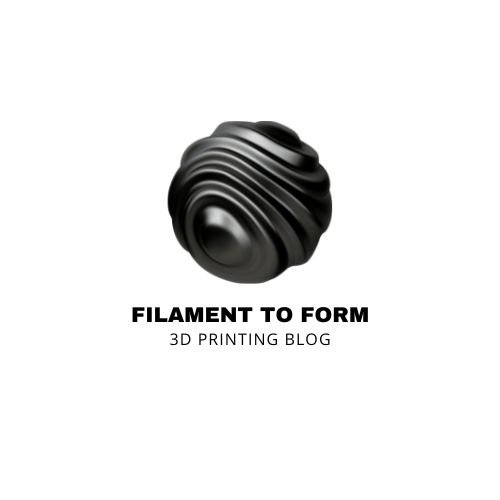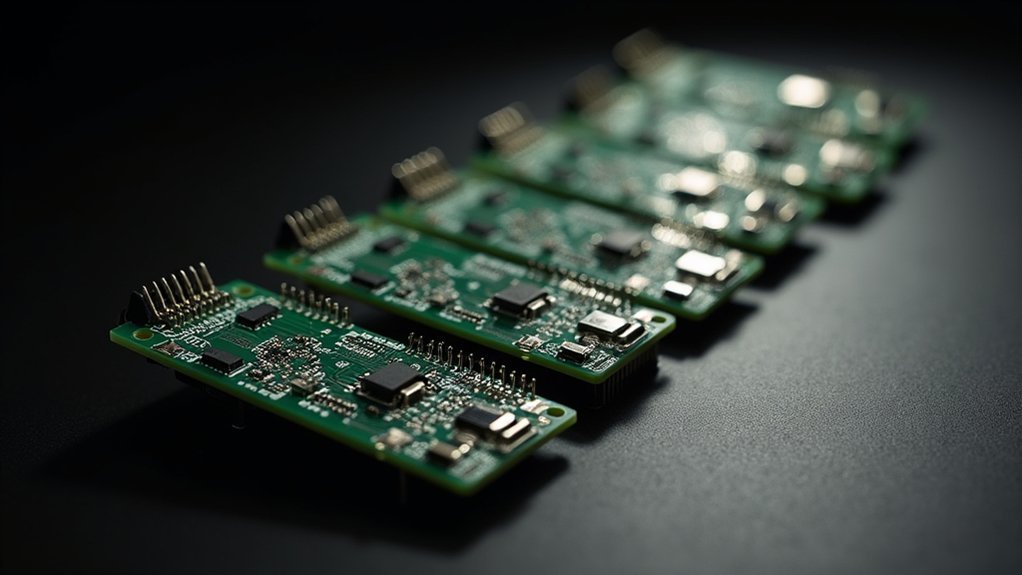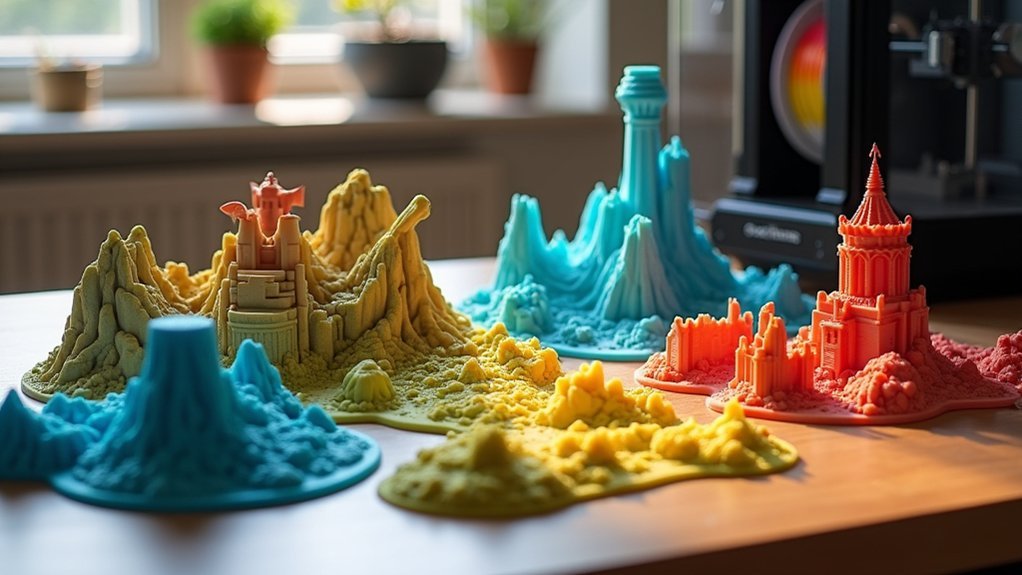You’ve probably noticed how traditional stepper motors can turn your 3D printing session into a noisy ordeal that disrupts your workspace. While you can’t eliminate all sounds from your printer, upgrading to the right stepper motor driver will dramatically reduce those jarring mechanical noises. The key lies in choosing drivers with advanced technologies like StealthChop and proper microstepping capabilities. However, not all “silent” drivers deliver the same results, and some surprising factors affect their actual performance.
Teyleten Robot TMC2209 V2.0 Stepper Motor Driver for 3D Printer (5pcs)
If you’re seeking dramatic noise reduction for your 3D printer, the Teyleten Robot TMC2209 V2.0 Stepper Motor Driver delivers whisper-quiet operation that transforms your printing experience. This pack of five drivers features genuine German TMC2209-TA chips with up to 1/256 microstepping and 2.5A maximum current handling. You’ll appreciate the large heatsinks that maintain cool operation and the UART module support for advanced control. Installation requires careful VREF adjustment—set 1.1V for standard motors and 1.2V for extruders. While compatible with various printers, some units may require pin modifications for sensorless homing functionality.
Best For: 3D printer enthusiasts and hobbyists looking to significantly reduce stepper motor noise while maintaining precise control and reliable performance.
Pros:
- Dramatic noise reduction compared to standard A4988 drivers with whisper-quiet operation
- Excellent thermal management with large heatsinks that keep drivers cool during operation
- Advanced features including up to 1/256 microstepping, UART support, and sensorless feedback capability
Cons:
- Installation requires careful VREF voltage adjustment and may need pin modifications for certain boards
- Some units in the pack may arrive non-functional or missing pins for diag connections
- Not all boards support full functionality without hardware modifications or pin bending
2PCS TMC2208 V1.2 3D Printer Stepper Motor Driver with Heat Sink
The 2PCS TMC2208 V1.2 stepper motor drivers deliver whisper-quiet operation that transforms noisy 3D printers into silent workhorses, making them ideal for makers who work in shared spaces or noise-sensitive environments. You’ll appreciate the straightforward installation with stackable headers that directly mount to your 3D printer board. These drivers handle 1.4A continuous current with 2A peaks, operating on 4.75V-36V with 256 subdivisions for smooth motion. They’re pin-compatible with A4988 and DRV8825 drivers, enabling easy upgrades. Remember to add cooling fans and adjust reference voltage to 0.95V for peak performance. Each package includes heat sinks and installation tools.
Best For: 3D printer enthusiasts and makers who want to upgrade to ultra-quiet stepper motor drivers with smooth operation and easy installation compatibility with existing A4988 or DRV8825 setups.
Pros:
- Dramatically reduces printer noise levels compared to standard A4988 and DRV8825 drivers for whisper-quiet operation
- Pin-compatible design allows for easy drop-in replacement upgrades without rewiring or board modifications
- Includes heat sinks, installation tools, and stackable headers for straightforward setup with comprehensive package contents
Cons:
- Requires additional cooling fans to prevent overheating and potential driver damage during operation
- UART mode functionality requires soldering three pads, which may be challenging for users without soldering experience
- Increased height from heat sinks may necessitate modifications to existing cooling fan brackets or enclosures
BIGTREETECH TMC2209 V1.3 Stepper Motor Driver (4Pcs)
Four BIGTREETECH TMC2209 V1.3 stepper motor drivers deliver ultra-silent operation through StealthChop2 technology, making them ideal for makers who prioritize quiet 3D printing without sacrificing performance. You’ll get 2A continuous drive current with 2.8A peak output across a 4.75V to 28V range. The drivers support 256 microsteps via microPlyer interpolation and feature Stallguard4 for sensorless homing. CoolStep technology reduces energy consumption by 75% while minimizing heat generation. PWM chopper mode prevents step loss and jittering, ensuring smooth motor control. They’re compatible with various motherboards including BTT Octopus and SKR series.
Best For: Makers and 3D printing enthusiasts who want ultra-quiet stepper motor operation with advanced features like sensorless homing and energy-efficient performance.
Pros:
- Ultra-silent operation with StealthChop2 technology and 256 microstep interpolation for smooth, quiet motor control
- CoolStep technology reduces energy consumption by 75% and minimizes heat generation for better thermal management
- Stallguard4 sensorless homing capability eliminates the need for physical endstop switches
Cons:
- Requires UART configuration knowledge for accessing advanced features beyond basic STEP/DIR operation
- Limited to 2A continuous current which may not be sufficient for larger or high-torque stepper motors
- No built-in heatsinks included, potentially requiring additional cooling solutions for demanding applications
HiLetgo A4988 Stepper Motor Driver Module with Heat Sink (5pcs)
Budget-conscious makers and DIY enthusiasts will find exceptional value in HiLetgo’s A4988 stepper motor driver modules, which deliver professional-grade features at an accessible price point. You’ll get five driver modules with heat sinks, offering multiple microstepping options from full-step to 1/16-step resolution. These drivers handle up to 35V and 1.2A output, making them compatible with RAMPS boards and popular 3D printers like Prusa Mendel and Ultimaker. You’ll appreciate the adjustable current control and built-in protections including thermal shutdown and over-current safeguards. However, you should handle the Vref adjustment carefully since the trim potentiometer can break easily during calibration.
Best For: Budget-conscious makers and DIY enthusiasts building 3D printers or CNC machines who need reliable stepper motor control with multiple microstepping options.
Pros:
- Five driver modules included with heat sinks at an accessible price point
- Multiple microstepping resolutions (full-step to 1/16-step) with adjustable current control
- Built-in safety protections including thermal shutdown, under-voltage lockout, and over-current protection
Cons:
- Trim potentiometer is fragile and breaks easily during Vref calibration
- Mixed reliability with some users reporting 40% non-functional units and 20% shorted modules
- Heat sink size may be insufficient when operating at maximum current capacity
WWZMDiB 3 Pcs Stepper Motor Driver Module for DRV8825 3D Printer
WWZMDiB’s 3-piece stepper motor driver module pack stands out for makers who need reliable DRV8825 replacements at an affordable price point. You’ll get thorough step resolution options from full-step to 1/32-step, supporting precise motor control for detailed prints. The drivers handle 8.2-45V with 2.5A maximum current, fitting most 3D printer configurations.
Built-in protection features include thermal shutdown, over-current protection, and short circuit safeguards to protect your electronics. However, you should note the 4.2-star rating reflects some quality concerns, with customer feedback indicating potential reliability issues requiring careful inspection upon arrival.
Best For: Budget-conscious 3D printer enthusiasts who need replacement DRV8825 stepper motor drivers and don’t mind potentially inspecting units for quality control issues.
Pros:
- Wide voltage range (8.2-45V) and high current capacity (2.5A) compatible with most 3D printer setups
- Comprehensive step resolution options from full-step to 1/32-step for precise motor control
- Multiple built-in protection features including thermal shutdown, over-current, and short circuit protection
Cons:
- Quality control issues reported by customers with some units arriving defective
- Relatively low 4.2-star rating suggests inconsistent product reliability
- Limited warranty information and potential return complications for faulty units
Factors to Consider When Choosing 3D Printer Stepper Motor Drivers for Silent Operation
When you’re selecting stepper motor drivers for quiet 3D printing operation, you’ll need to evaluate several critical specifications that directly impact noise levels. The driver technology type determines the fundamental noise characteristics, while current rating requirements and voltage compatibility guarantee proper motor performance without excessive heat or vibration. You’ll also want to examine microstepping resolution capabilities and heat dissipation design, as these factors greatly influence both operational silence and long-term reliability.
Driver Technology Type
Different stepper motor driver technologies can dramatically impact your 3D printer’s noise levels during operation. You’ll want to prioritize drivers featuring StealthChop technology, which considerably reduces operational noise compared to traditional alternatives. Look for drivers with microPlyer interpolation capabilities that smooth motor movement and minimize vibrations.
Advanced features like Stallguard and CoolStep dynamically control motor current while reducing vibrations, enhancing silent operation. You should consider drivers supporting high microstepping ratios, particularly those capable of 1/256 steps, as they create smoother motion through reduced step sizes.
Don’t overlook heat dissipation requirements – drivers with large heatsinks maintain peak performance while preventing overheating-related noise. Confirm your chosen driver technology remains compatible with your motherboard to fully utilize these silent operation features.
Current Rating Requirements
Beyond selecting the right driver technology, you must match your driver’s current rating specifications to your stepper motors’ power requirements for ideal silent performance. Your driver’s continuous current rating should meet or exceed your motor’s requirements to prevent overheating and guarantee reliable operation. Don’t overlook peak current ratings, which determine the driver’s ability to handle short bursts needed for overcoming inertia during rapid movements.
For quieter operation, consider drivers with lower default current settings that reduce noise during idle periods while maintaining adequate power during active use. Look for adjustable current settings that let you fine-tune output based on your specific motor needs, optimizing both performance and noise levels. Always verify voltage range compatibility between your driver and stepper motor to avoid inadequate power supply and increased operational noise.
Voltage Compatibility Range
Since voltage compatibility directly impacts your stepper motor’s performance and noise levels, you’ll need to carefully match your driver’s voltage range with your motor specifications. Most stepper motor drivers operate between 4.75V to 36V, but you should verify your specific requirements. Higher voltage compatibility enables increased torque and performance at higher speeds, as your motors receive more power. However, never exceed your driver’s maximum voltage rating to prevent damage or malfunction.
Choose drivers with wider voltage ranges for greater flexibility across different 3D printer setups and motor specifications. Operating within the recommended voltage range maintains ideal thermal performance and efficiency, contributing to quieter operation during printing. This careful voltage matching guarantees your silent stepper motor drivers perform reliably while minimizing noise.
Microstepping Resolution Capabilities
Microstepping resolution capabilities determine how smoothly and quietly your stepper motors operate by dividing full steps into smaller increments. Higher resolutions up to 1/256 provide finer control and reduce vibrations, making your printer markedly quieter. You’ll find that drivers with advanced interpolation techniques generate additional microsteps, enhancing overall motor silence.
However, you’ll need to balance resolution with performance requirements. Lower microstepping delivers more torque, while higher resolutions offer smoother motion at the cost of reduced holding power. This choice directly affects your print quality – higher microstepping enables better positional accuracy and smoother shifts between steps, resulting in finer details and surface finishes. Additionally, effective microstepping reduces mechanical wear by minimizing abrupt movements and jerks throughout operation.
Heat Dissipation Design
When selecting stepper motor drivers for silent operation, you’ll discover that heat dissipation design directly impacts both performance and noise levels. Drivers with larger heatsinks provide better cooling by increasing surface area for heat dissipation, enabling continuous operation without thermal problems that can create unwanted noise.
You’ll need active cooling solutions like fans for drivers operating at higher currents or in enclosed printer cabinets to maintain ideal temperatures. Look for drivers featuring thermal protection with over-temperature shutdown capabilities—they’ll safeguard against heat damage while ensuring reliable performance.
Proper voltage adjustment and current management greatly reduce heat generation, creating cooler operating conditions that enhance efficiency and minimize thermal-related noise, ultimately contributing to your printer’s silent operation goals.
UART Configuration Features
While traditional stepper motor drivers require manual potentiometer adjustments, UART-enabled drivers offer you sophisticated digital control that revolutionizes silent operation capabilities. You’ll access StealthChop technology through UART configuration, dramatically reducing operational noise compared to conventional step modes. This interface enables precise microstepping control and dynamic current adjustment, enhancing performance for your specific printing requirements.
UART drivers provide sensorless homing functionality, detecting stall conditions without additional sensors, which reduces component count and improves system reliability. You can remotely adjust critical parameters like current limits and microstepping resolutions without physical hardware access. This single-interface communication simplifies your wiring setup while eliminating extra components. The digital control allows real-time fine-tuning during operation, ensuring peak silent performance throughout different printing phases and maintaining consistent quality output.
Motherboard Compatibility Issues
Before upgrading to silent stepper motor drivers, you must verify your motherboard’s compatibility requirements to avoid costly installation failures. Check that your motherboard’s voltage and current ratings match your new driver’s specifications to prevent overheating and guarantee peak performance.
Examine pin alignments carefully, as mismatched connections can cause direction issues during operation. Some drivers like the TMC2209 require disabling UART mode on certain motherboards to function in direct step mode, complicating your installation process.
You’ll also need to verify that all necessary pins are present on your motherboard. Missing pins can disable critical features like sensorless homing, undermining your silent operation goals. Research your specific motherboard model thoroughly, as universal compatibility doesn’t exist across all driver and motherboard combinations.
Installation Complexity Considerations
Although compatibility verification is essential, you’ll also need to evaluate the installation complexity before selecting your silent stepper motor drivers. Some drivers require soldering for UART functionality, while others feature stackable headers for straightforward installation. You’ll need to measure and set the reference voltage (VREF) using a multimeter during setup—never connect motors while measuring voltage, as this can cause damage.
Certain models require specific configurations like bending pins to disable UART mode or adjusting jumper settings correctly. Consider cooling requirements too; some drivers need additional fans or enhanced airflow to prevent overheating. These factors can greatly complicate installation, so choose drivers matching your technical comfort level and available tools for ideal results.
Frequently Asked Questions
How Do I Install Stepper Motor Drivers Without Damaging My 3D Printer?
You’ll need to power down your printer completely, carefully remove existing drivers by gently pulling them straight up, then align new drivers correctly before pressing down firmly until seated.
Can I Mix Different Stepper Motor Driver Brands on the Same Printer?
You can mix different stepper motor driver brands on the same printer, but you’ll need to configure each driver’s settings individually. Make certain they’re compatible with your motherboard’s voltage and current requirements.
What Firmware Changes Are Needed When Upgrading to Silent Stepper Drivers?
You’ll need to update your stepper driver type in firmware configuration, adjust current settings, and modify microstepping values. Most modern drivers work with existing firmware once you’ve configured the correct driver model.
Do Silent Stepper Motor Drivers Reduce Print Speed or Accuracy?
Silent stepper drivers don’t reduce print speed or accuracy when properly configured. You’ll maintain the same performance levels while gaining quieter operation. However, you must verify correct current settings and microstepping configurations for ideal results.
How Often Should Stepper Motor Drivers Be Replaced for Optimal Performance?
You don’t need to replace stepper motor drivers on a schedule. They’ll typically last years with proper cooling and power management. Replace them only when they fail, overheat consistently, or you’re upgrading features.





Leave a Reply